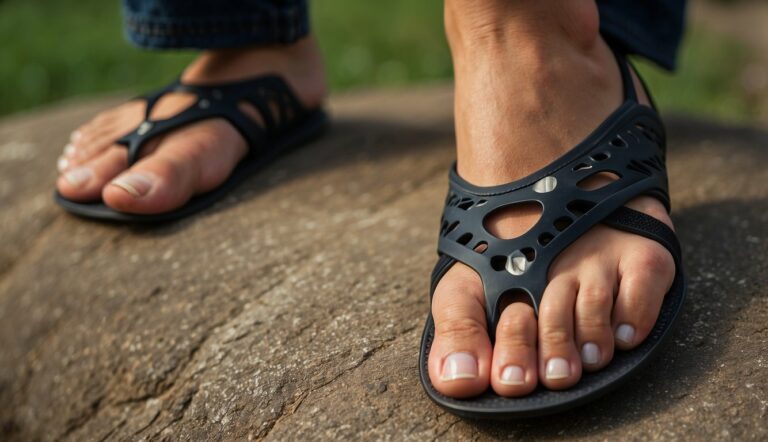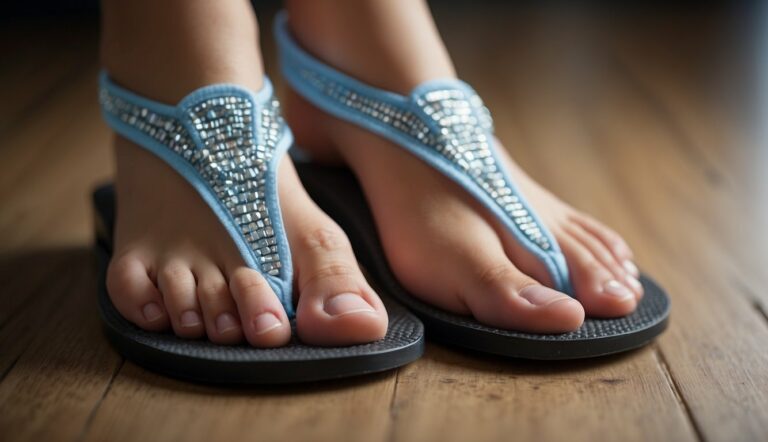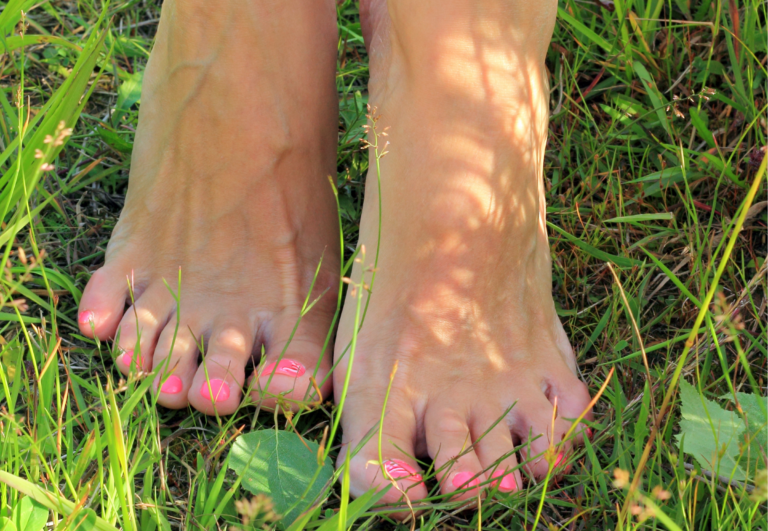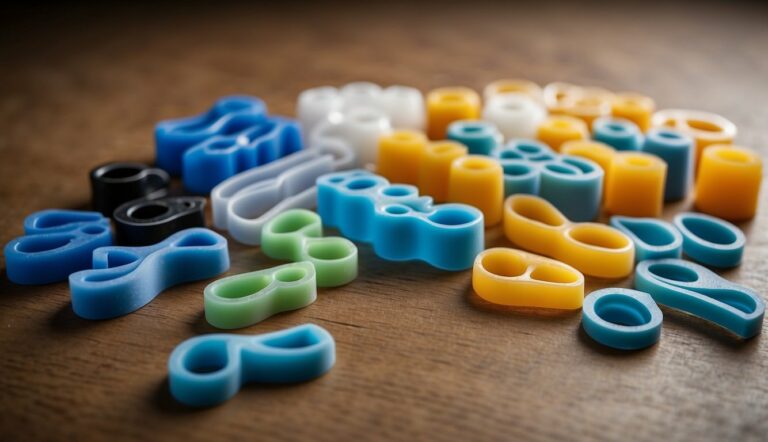Can Toe Spacers Cause Damage: Risks of Improper Use
Toe spacers are devices designed to improve foot health by maintaining proper toe alignment, which in turn can alleviate certain types of foot pain. While these spacers can offer benefits such as relief from bunions and hammertoes, it is crucial to use them correctly to avoid potential harm.
In my experience with toe spacers, I’ve observed that using them improperly can lead to issues such as increased pain or even injury. It’s essential for individuals to understand that toe spacers come in various sizes and materials, each potentially affecting the feet differently. My advice is always to proceed with caution and educate yourself on the proper use of these devices.
I recommend starting with short periods of wear and gradually increasing the duration, as this allows the feet to adjust to the spacers. Consulting with a podiatrist can also provide personalized guidance to ensure that toe spacers are beneficial rather than detrimental to your foot health.
Can Toe Spacers Cause Damage to Your Feet or Toes?
Toe spacers are generally considered safe when used correctly and for the appropriate amount of time.
However, there are circumstances in which toe spacers could potentially cause damage:
- Improper Fit: If toe spacers are too tight or too large, they can cause discomfort, restrict circulation, or create pressure points, leading to pain or injury.
- Overuse: Wearing toe spacers for too long, especially when first starting out, can lead to overstretching or straining the muscles and ligaments in the toes and feet.
- Pre-existing Conditions: Individuals with certain foot conditions, such as severe bunions, hammertoes, or diabetes with related neuropathy, may experience worsening symptoms or complications if toe spacers are used without professional guidance.
- Ignoring Pain: Continuing to use toe spacers in the face of persistent pain can lead to further foot issues. Pain is an indicator that something may be wrong, and ignoring it can result in damage.
To minimize the risk of damage, it’s important to choose the correct size of toe spacers, start with short periods of use, and gradually increase as tolerated. It’s also crucial to consult with a healthcare professional before using toe spacers, particularly for individuals with existing foot problems or those who have concerns about using them safely.
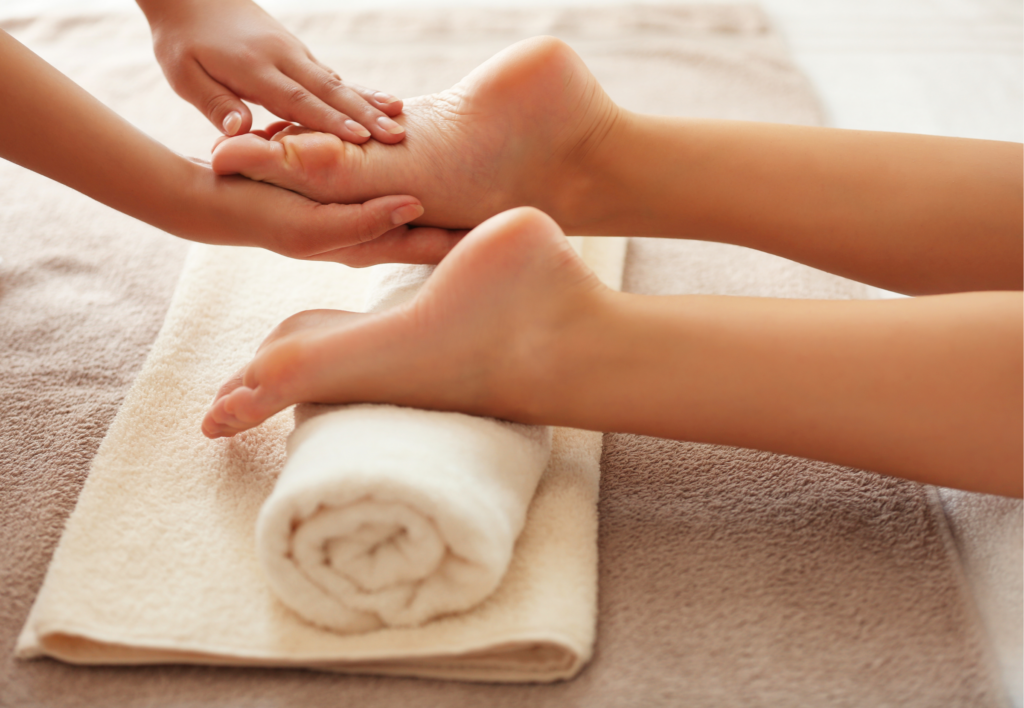
Health Benefits and Risks of Using Toe Spacers
In my experience, toe spacers offer both potential health benefits and risks. It’s critical to understand both to safely integrate them into your foot care routine.
Correcting Toe Deformities
Toe spacers can be beneficial in correcting toe deformities such as hammertoes, bunions, corns, and calluses. They work by gently stretching the toes to their natural position, which can lead to improved balance and stability, ultimately enhancing foot health.
For example:
- Hammertoes: Spacers help by preventing the toes from curling.
- Bunions: Using spacers potentially slows down the progression of the joint deformity.
Potential for Injury
Improper use of toe spacers can increase the risk of injury. When spacers apply too much pressure or are worn for too long without a break, it can lead to foot pain or exacerbate existing problems. It’s crucial to listen to your body and follow guidelines for duration and frequency of use.
Common injuries could include:
- Overstretching: Causes strain in the toes and may exacerbate plantar fasciitis.
- Reduced circulation: If the spacers are too tight, leading to discomfort and potentially serious issues for those with diabetes.
Impact on Foot Health
Toe spacers can play a role in overall foot health by promoting proper toe alignment, which is pivotal for foot strength and comfort during movement like walking and running. They may also aid in the recovery period of foot ailments and provide pain relief.
Specific impacts include:
- Osteoarthritis and Rheumatoid Arthritis: May find relief in joint pressure.
- Ingrown Toenails and Neuromas: Conditions that may benefit from toe separation to alleviate pain and aid in recovery.
Note: It’s advisable to consult with a foot care specialist before using toe spacers, especially for those with underlying health conditions.
Usage Guidelines
When using toe spacers, it’s crucial to ensure that they are suited to your feet’s specific needs to prevent any potential damage. The material and design should foster natural alignment without causing stress or discomfort.
Proper Fit and Sizing
Choosing the right size toe spacers is paramount. A poorly fitted toe spacer can lead to increased pressure and misalignment, defeating their purpose. Toe spacers often come in various materials, like silicone or foam, offering different levels of flexibility and support. Here’s a quick reference to help ensure a proper fit:
Silicone Toe Spacers:
- More flexible, adapt to toe size
- Opt for a snug fit that does not constrict
- Ensure they sit comfortably between toes without pinching
Foam Toe Spacers:
- Provide more cushioning
- Should gently separate toes without forcing them apart
- Pick a size that allows for some movement
Always consult the sizing chart provided and consider reaching out to a podiatrist or foot surgeon before making a selection, especially if you have existing foot conditions.
Recommended Duration
The duration for wearing toe spacers can vary depending on individual needs and recommendations from a foot care professional. Key points for consideration:
- Initial Use: Start with short periods, such as 10-15 minutes, to acclimate your toes to the spacers.
- Progression: Gradually increase wearing time as comfort allows, but avoid prolonged use exceeding the recommended duration from the product or your podiatrist.
It’s essential to listen to your body. Discontinue use if you experience pain or discomfort and seek advice from a health care professional like a DPM (Doctor of Podiatric Medicine). Additionally, wearing toe spacers during light activities or at rest can be more beneficial than during vigorous exercises, where there’s an increased risk of improper foot movement or additional stress on the toes.
Activities and Exercises
Using toe spacers can contribute to the health of your feet by encouraging proper alignment and increased mobility during various activities and exercises. They can be particularly useful when integrated into your regular fitness routines and specific exercises aimed at strengthening the foot’s intrinsic muscles.
Incorporating Toe Spacers in Daily Routines
I find that integrating toe spacers during typical daily activities like walking or running can aid in maintaining toe alignment, which may improve overall balance and stability.
Running with toe spacers should be approached with caution, starting with short distances to adapt gradually. For yoga enthusiasts, toe spacers like Yoga Toes Gems can enhance the practice by providing that extra stretch and alignment during poses.
- Walking: Begin with short, casual walks using toe spacers.
- Running: Introduce spacers on a low-mileage day and increase slowly as comfort improves.
- Daily Wear: Use toe spacers at home during your down-time for continuous alignment assistance.
Exercises for Enhanced Mobility
To enhance the benefits of toe spacers, I recommend specific exercises that target the ligaments, tendons, and intrinsic foot muscles. Stretching and mobility exercises with toe spreaders can further improve the strength and flexibility of your feet.
- Toe Splaying: Spread your toes apart and hold the position to strengthen muscles.
- Marble Pickups: Use your toes to pick up small objects, promoting dexterity and strength.
- Towel Curls: Curl a towel under your feet with your toes to activate foot muscles.
By incorporating toe spacers into your daily activities and mobility exercises, you can work towards healthier and more resilient feet. Remember to listen to your body and adjust usage to avoid overexertion.
Selecting the Right Product
When choosing toe spacers for foot health and proper alignment, selecting a product that ensures both safety and performance is crucial. The goal is to improve foot function without causing additional issues.
Assessing Quality and Safety
In selecting toe spacers, I look first for highly-rated options that prioritize safety and performance. The materials used are key; for instance, silicone gel is popular for its cushioning and flexibility.
| Material | Benefits | Considerations |
|---|---|---|
| Silicone Gel | Flexible, provides cushioning | Check for skin reactions |
| Foam | Soft, gentle cushioning | Less durable than silicone |
| Rubber | Durable, maintains shape | May cause discomfort to sensitive skin |
Performance-wise, the product should assist with proper toe alignment during weight-bearing activities and work with rather than against conventional footwear. A design that mimics the natural splay of toes while standing barefoot is preferable for both foot care and athletic performance.
Reading Customer Reviews
Before purchasing, I always read through customer reviews, particularly on sites like Amazon. Reviews can provide insight into real-life performance and the safety profile of the product.
| Aspect | 5-Star Rating | 1-Star Rating |
|---|---|---|
| Comfort | Good cushioning, no irritation | Lacks cushion, causes discomfort |
| Effectiveness | Helps with toe alignment, reduces aches | No noticeable improvement |
| Durability | Holds shape well, long-lasting | Tears easily, poor quality |
| Fit | Fits well with various toe boxes | Too small/big for some shoes |
Highly-rated products like the Mind Bodhi Toe Separators tend to score well across these categories. Noticing patterns in reviews about aches and pains relief, athletic performance, fit within toe boxes, and posture improvement can guide my decision towards a safer, more effective choice. The price is also a key factor—the toe spacers must provide value in terms of cost versus benefits in foot care and foot health.
Toe Spacer Fundamentals
When it comes to toe spacers, understanding the different types available and the materials they are made from is crucial for their safe and effective use.
Types of Toe Spacers
I’ve found that toe spacers come in various shapes and sizes, each designed for specific purposes. You’ll typically come across two:
- Standard Toe Spacers: These fit between all the toes and are often worn while resting. They are not usually intended to be worn with shoes.
- Specialized Toe Spacers: Some are tailor-made for certain conditions, like bunions, and can be worn inside shoes for continuous relief.
Materials and Designs
Materials play a significant role in the comfort and functionality of toe spacers. Here is a breakdown:
| Material | Description |
|---|---|
| Silicone | Soft and flexible, silicone toe spacers offer a comfortable fit and are durable for long-term use. |
| Foam | Typically less durable than silicone, foam provides a gentle separation with a soft feel. |
| Gel Toe Separators | A subtype of silicone spacers, medical-grade gel is often used for its hygienic and hypoallergenic properties. |
In design, some toe spacers are minimalistic, separating only two toes, while others provide a comprehensive separation for all toes. The choice depends on the individual’s needs and the specific foot issue being addressed.
